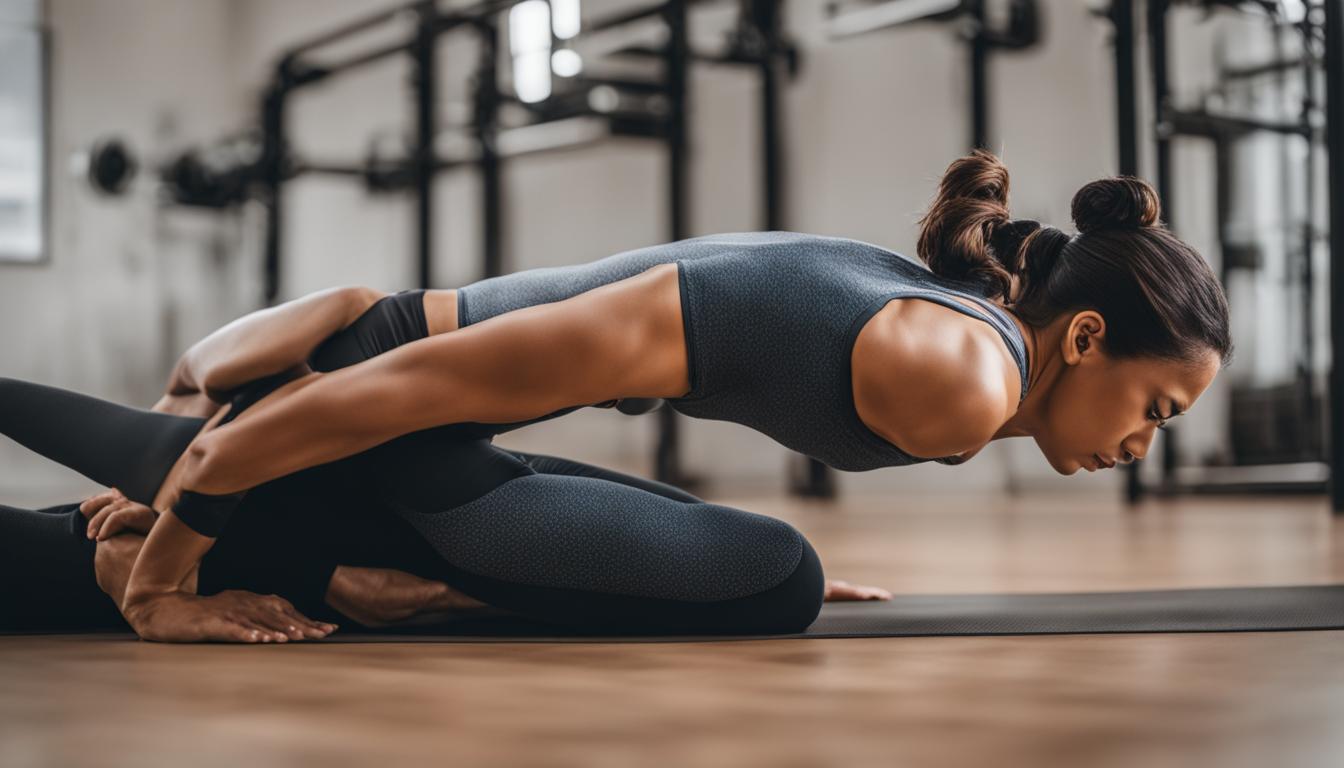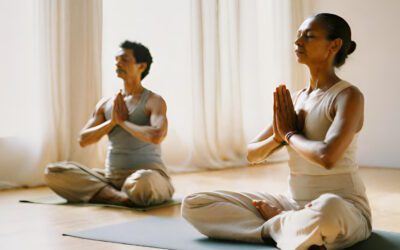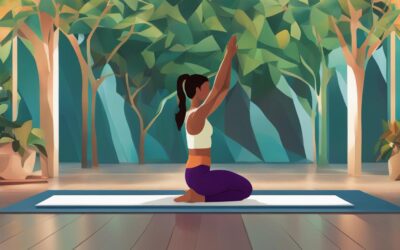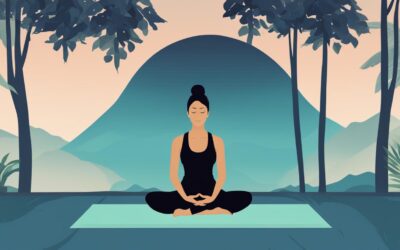The foundation of modern yoga lies in the practice of asanas, which are the primary techniques taught in yoga classes worldwide. Asanas, also known as yoga poses or yoga postures, offer a multitude of physical and energetic benefits. They can be practiced by individuals of all ages and abilities, as they do not require extreme flexibility.
Yoga instructors categorize asanas into different groups based on their energetic and physical effects, such as grounding and balancing, uplifting and opening, nurturing and integrating, and warming and calming. By incorporating positions from each category, practitioners can create a well-rounded sequence that targets different muscle groups and benefits the entire body.
Approaching asana practice with patience, consistency, and a focus on proper alignment enhances flexibility, strength, and overall well-being. Whether you are a beginner or an advanced practitioner, there are specific types of asanas that cater to your level. Beginners can focus on building a solid foundation, improving flexibility, and developing strength gradually, while advanced practitioners can challenge themselves with more complex poses that require higher levels of strength, flexibility, and balance.
To enhance your yoga practice with asanas, it is important to consider certain tips and considerations. Starting where you are and setting realistic expectations, creating a comfortable space, and practicing with proper guidance and focus are crucial. Additionally, utilizing modifications, staying hydrated, and prioritizing safety and proper alignment contribute to a safe and effective practice.
Key Takeaways:
- Asanas are the foundation of modern yoga and provide various physical and energetic benefits.
- Practitioners of all ages and abilities can practice asanas, as they do not require extreme flexibility.
- Asanas can be categorized into different groups based on their energetic and physical effects.
- Beginner asanas focus on building a solid foundation, while advanced asanas challenge experienced practitioners.
- Enhancing your yoga practice with asanas requires considering tips such as proper guidance, modifications, and prioritizing safety.
Types of Asanas for Beginners and Advanced Practitioners
When it comes to practicing yoga poses, there are different types of asanas that cater to both beginners and advanced practitioners. Whether you’re just starting out or have been practicing for years, incorporating the right asanas into your routine can help you improve flexibility, build strength, and deepen your practice.
Beginner Asanas
If you’re new to yoga, it’s important to start with beginner asanas that focus on building a solid foundation. Standing poses, such as Mountain Pose (Tadasana) and Warrior I (Virabhadrasana I), help improve balance and strengthen the lower body. Seated poses, like Easy Pose (Sukhasana) and Bound Angle Pose (Baddha Konasana), promote flexibility in the hips and lower back. Gentle backbends, such as Sphinx Pose (Salamba Bhujangasana) and Bridge Pose (Setu Bandhasana), help to open the chest and stretch the spine.
Advanced Asanas
For experienced yogis looking to challenge themselves, advanced asanas offer a higher level of difficulty. Arm balances, such as Crow Pose (Bakasana) and Handstand (Adho Mukha Vrksasana), require strength, balance, and concentration. Inversions, such as Headstand (Sirsasana) and Shoulderstand (Sarvangasana), help to develop core strength and improve circulation. Deep backbends, like Wheel Pose (Urdhva Dhanurasana) and Camel Pose (Ustrasana), require flexibility in the spine and shoulders.
Asanas for Flexibility and Strength
Regardless of your level of practice, there are specific asanas that target flexibility and strength. Forward folds, such as Standing Forward Bend (Uttanasana) and Seated Forward Bend (Paschimottanasana), help to lengthen the hamstrings and improve flexibility in the spine. Twists, like Revolved Triangle Pose (Parivrtta Trikonasana) and Revolved Chair Pose (Parivrtta Utkatasana), increase spinal mobility and improve digestion. Asanas that build strength include Plank Pose (Phalakasana) and Warrior II (Virabhadrasana II), which engage the core, arms, and legs.
Remember, whether you’re a beginner or an advanced practitioner, it’s important to progress at your own pace and listen to your body. Always prioritize safety and proper alignment to prevent injuries and ensure a safe and effective practice. With time, dedication, and the right asanas, you can enhance your yoga practice and experience the transformative benefits of this ancient practice.
Enhancing Your Yoga Practice with Asanas: Tips and Considerations
To optimize your yoga practice and make the most of your asanas, consider incorporating these helpful tips and considerations. Whether you are a beginner or an experienced practitioner, these suggestions will enhance your overall yoga experience.
Start Where You Are
Remember that yoga is a personal journey, and it’s important to start where you are. Avoid comparing yourself to others and set realistic expectations for your practice. Embrace your current abilities and progress at a pace that feels comfortable for you.
Create a Sacred Space
To fully immerse yourself in your practice, create a clean and clutter-free space dedicated to yoga. Gather any necessary accessories, such as a yoga mat, blocks, and straps, to support your practice. By establishing a serene environment, you can cultivate a sense of peace and focus during your sessions.
Timing, Duration, and Frequency
Decide on the timing, duration, and frequency of your yoga practice based on your schedule and goals. Find a time of day that works best for you, whether it’s early morning, during lunch breaks, or in the evening. Determine the ideal duration for your sessions, keeping in mind that consistency is key. Whether you practice daily or a few times a week, finding a routine that suits you will help you stay committed to your yoga journey.
Practice with Mindfulness
As you move through your asanas, focus on your breath and stay present in the moment. Mindfulness is an essential aspect of yoga, helping you connect your mind, body, and spirit. Read and understand the instructions for each pose before attempting them, and don’t hesitate to seek guidance from a knowledgeable yoga teacher if needed.
Modify and Adapt
Yoga is a practice of self-discovery, and it’s important to honor your body’s unique needs. Use props and modifications to make poses more accessible or challenging, depending on your abilities. Listen to your body and make adjustments as necessary to prevent injuries and ensure a safe and effective practice.
Integrate and Reflect
After your practice, take a few moments to reflect and integrate the benefits of your session. Hydrate yourself, rest, and allow your body to absorb the effects of the practice. Regularly assess your progress and adjust your practice accordingly, continuing to challenge yourself and grow in your yoga journey.
By following these tips and considerations, you can enhance your yoga practice and deepen your connection with yourself. Remember, your yoga journey is unique, and it’s all about finding what works best for you. Embrace the process, stay committed, and enjoy the transformative power of asanas.
FAQ
What are asanas?
Asanas are the physical postures or poses practiced in yoga. They form the foundation of modern yoga and offer various physical and energetic benefits.
Do I need to be flexible to practice asanas?
No, asanas do not require extreme flexibility. They can be practiced by individuals of all ages and abilities. Start where you are and progress at your own pace.
What are the different categories of asanas?
Asanas are often grouped into categories based on their energetic and physical effects. These categories include grounding and balancing, uplifting and opening, nurturing and integrating, and warming and calming.
What are beginner asanas?
Beginner asanas focus on building a solid foundation, improving flexibility, and developing strength gradually. They include standing poses, seated poses, and gentle backbends.
What are advanced asanas?
Advanced asanas challenge experienced practitioners and require a higher level of strength, flexibility, and balance. They may include arm balances, inversions, and deep backbends.
How do asanas benefit flexibility and strength?
Asanas for flexibility target tight muscles and aim to increase range of motion. Asanas for strength focus on building muscular strength and stability.
What tips can enhance my yoga practice with asanas?
Start where you are, set realistic expectations, create a comfortable space, read and understand pose instructions, practice with patience and consistency, listen to your body, use modifications and props, take breaks when needed, and prioritize safety and proper alignment.









